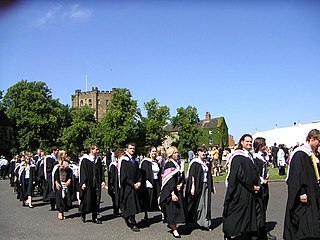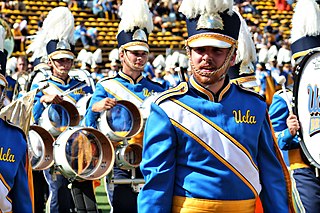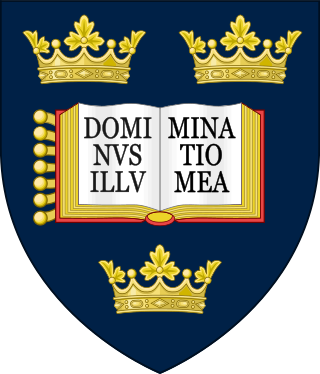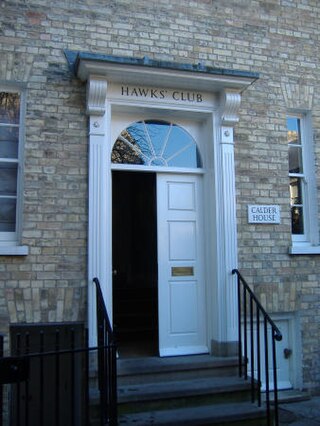
The academic dress of Durham University has many similarities with that of other older British universities such as Oxford and Cambridge. Most colleges of Durham University insist on gowns being worn on formal occasions, including matriculation and formal halls (dinners); exceptions are Van Mildert, St Cuthbert's Society, Collingwood, Stephenson, St Aidans, and The College of St Hild and St Bede. Some colleges also insist on their being worn to Junior Common Room meetings, and they are often seen in college chapels. At formal halls, only gowns are worn and doctors normally wear their undress gowns; for more ceremonial occasions full-dress gowns and hoods are worn by graduates. Until 1990, the General Regulations of university 'recommended' the wearing of gowns by members of the university when attending divine service at the Cathedral – but this is now left to individual choice apart from at certain services. Gowns are also customarily worn to meetings of the university Senate by members of that body.

Solihull School is a coeducational private day school in Solihull, West Midlands, England. Founded in 1560, it is the oldest school in the town and is a member of the Headmasters' and Headmistresses' Conference.

School colors, also known as university colors or college colors, are the colors chosen by a school, academy, college, university or institute as part of its brand identity, used on building signage, web pages, branded apparel, and the uniforms of sports teams. They can promote connection to the school, known as "school spirit", and help differentiate it from other institutions.
Maroon is a brownish crimson color that takes its name from the French word marron, or chestnut. "Marron" is also one of the French translations for "brown".

A blazer is a type of jacket resembling a suit jacket, but cut more casually. A blazer is generally distinguished from a sport coat as a more formal garment and tailored from solid colour fabrics. Blazers often have naval-style metal buttons to reflect their origin as jackets worn by boating club members.
University rowing in the United Kingdom began when it was introduced to Oxford in the late 18th century. The first known race at a university took place at Oxford in 1815 between Brasenose and Jesus and the first inter-university boat race, between Oxford and Cambridge, was rowed on 10 June 1829.

The Varsity Match is an annual rugby union fixture played between the universities of Oxford and Cambridge in England. The event began in 1872 with the first men's match, with interruptions only for the two World Wars and the COVID-19 pandemic. From 1921 to 2023 the game was played at Twickenham Stadium, London and usually took place in early December. The game is now played in March and will take place at StoneX Stadium in 2024.

The Hawks' Club, founded in 1872, is a members-only social club for the leading sportsmen at the University of Cambridge. Membership is by election only, and the usual criterion is that the candidate should have his Blue. Many notable individuals have been, or are, members, including King George VI, King Charles III, Rob Andrew, Mike Atherton, Chris Brasher, Gavin Hastings and Hugh Laurie.
A blue is an award of sporting colours earned by athletes at some universities and schools for competition at the highest level. The awarding of blues began at Oxford and Cambridge universities in England. They are now awarded at a number of other British universities and at some universities in Australia and New Zealand.

Cambridge University Lightweight Rowing Club (CULRC) was the University rowing club for lightweight male oarsmen at the University of Cambridge, principally to race against Oxford University Lightweight Rowing Club (OULRC) annually in the Lightweight Men's Boat Race.

Team Durham is a student-run organisation responsible for sport at Durham University. Durham University's sports programme, run by Team Durham, has produced more professional sports people than any other UK university and has twice seen Durham named Times and Sunday Times Sports University of the Year. It has ranked in the top three institutions in British Universities and Colleges Sport (BUCS) every season since 2011–12. Six Team Durham alumni or current athletes have won seven Olympic and Paralympic medals since 1996.
Palatinate or palatinate purple is a purple colour associated with Durham University and the County and City of Durham. The term has been used to refer to a number of different shades of purple. The Oxford English Dictionary defines it as a "light purple or lavender colour", which is used for Durham academic hoods. For corporate purposes Durham University uses a darker shade.
Mark David Bailey, is a British academic, headteacher and former rugby union player. Since 2020, he has been Professor of Later Medieval History at the University of East Anglia. In 2019, he delivered the James Ford Lectures in British History at Oxford University, which were later published as a book, After the Black Death: Economy, society, and the law in fourteenth-century England.

Cambridge Blue is the colour commonly used by sports teams from the University of Cambridge. There is contextual and historical variation. The colour used since the mid-20th century by Cambridge University Boat Club is greener than that used by Cambridge University R.U.F.C.. This rowing colour was created when Alf Twinn, the boatman from 1934 to 1984, added more yellow to this shade, reportedly to distinguish it from the rugby club's colour.
Cambridge University Amateur Boxing Club (CUABC) is the boxing club of the University of Cambridge, England. The club was founded in 1896 after the King's College Boxing Club amalgamated with Fordham's School of Arms to form the Cambridge University Boxing & Fencing Club (CUB&FC).

Oxford Blue is the official colour of the University of Oxford. The official Oxford branding guidelines set its definition as Pantone 282, equivalent to the hex code #002147.

The Oxford University Polo Club is the Discretionary Full Blue sports club for competitive polo at Oxford University. Founded in 1874, it is one of the four oldest continuing polo clubs worldwide. Its annual Varsity Match against Cambridge University Polo Club, established in 1878, is the second oldest continuing polo fixture in the Western world. It is played at Guards Polo Club, England, usually at the beginning of June.

Oxford University Women’s Association Football Club is an English football club representing the University of Oxford. The club consists of two squads, the Blues and the Furies. Both teams compete in the BUCS League against other British universities. The Blues won BUCS Midlands Division 2A in the 2013/2014 season, gaining them promotion into Midlands Division 1A. The Blues have retained their place in this league for the 2016/17 season. The Furies won the Midlands 3A league in 2015/16, gaining promotion to the 2A division.
The Cambridge University Polo Club is the Discretionary Full Blue sports club for competitive polo at the University of Cambridge. Founded in 1873, it is the oldest surviving polo club in Europe and the second oldest in the world. Its annual Varsity Match against Oxford, established in 1878, is the second oldest continuing polo fixture in the western world.














